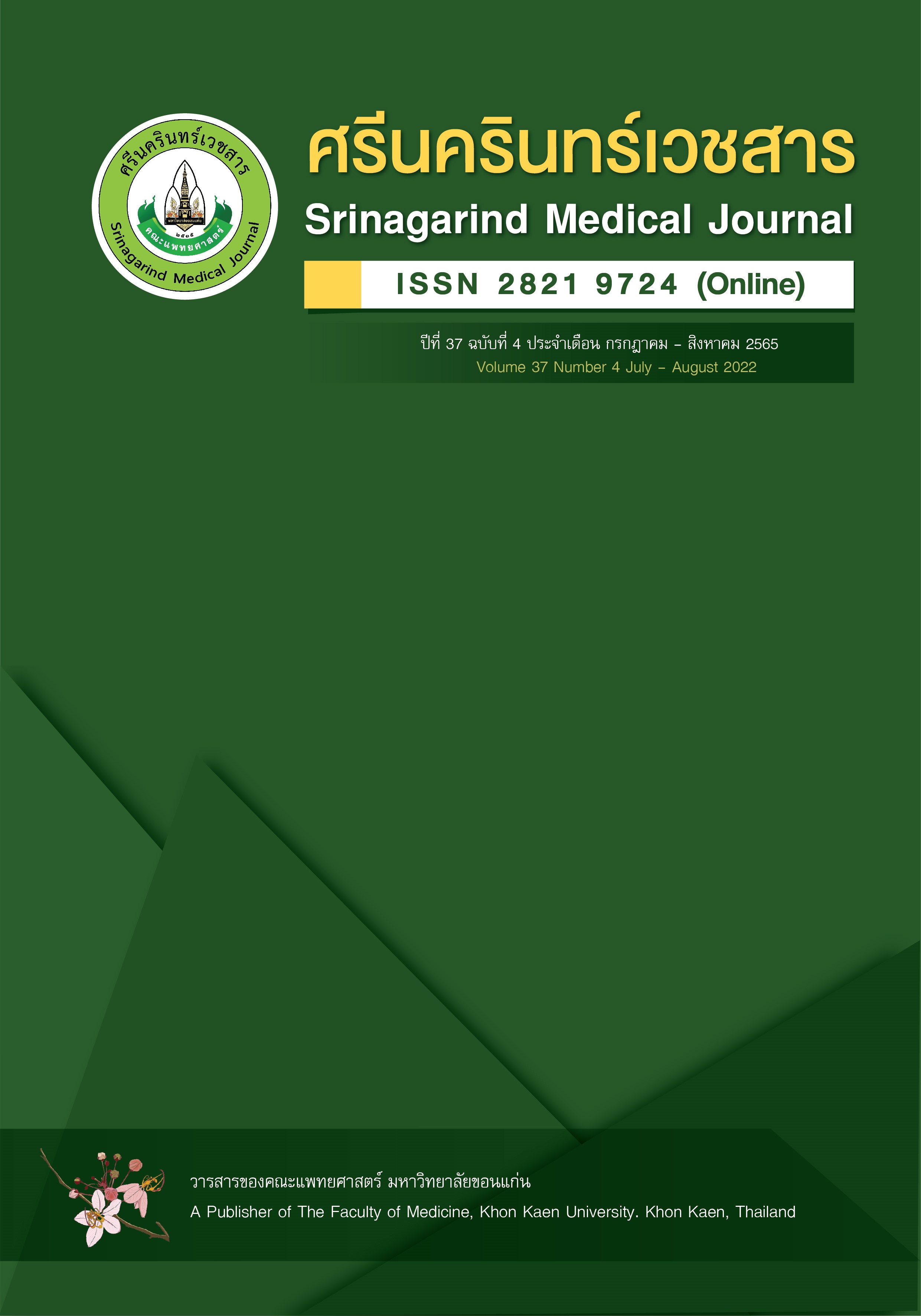Problems with Access to Services for Orofacial Clefts Patients
Keywords:
accessibility, orofacial cleft, Tawanchai CenterAbstract
Background and Objectives: Cleft lip and Cleft Palate are handled by a complex multidisciplinary team, therefore, identifying the patients’ problems regarding the accessibility of services is important.
Methods: A descriptive study on finding problems in accessing services in an integrative clinic of patients with an Orofacial Cleft from a sample of 120. A questionnaire developed were used: 1) 13 general data, 2) 33 problems before and during the service, and 3) other problems. Giving each patient/caregiver a response time of 15 minutes. Quantitative data were analyzed using percentage statistics, and content analysis were qualitative data.
Results: Most of the patients were male, aged 0-5 years, and had the right to Thailand’s universal health coverage at 55%, 34.2, and 79.2, respectively. Most of the parents were female, aged 41-50 years, completed secondary education and received assistance from the Tawanchai Foundation, 82.5%, 33.9, 35.8, and 66.7, respectively. 42.5% said the problem they had before receiving the service was the treatment location was far from home. And 32.5% didn’t know Tawanchai Center existed. The problems they faced during the service are they do not have enough money to travel. Not enough parking and had to wait for longtime in order to receive the services and treatments, these problems made up 25.8%, 23.3%, and 12.5%, respectively.
Conclusion: The problem with receiving services is that the treatment facility is far from home, the patients and their caregivers don’t have money to travel to the center, a long waiting time, and insufficient parking space. The center must develop and manage a fast service, and support the travel expenses for continuous follow-up treatment.
References
Chowchuen B, Surakunprapha P, Winaikosol K, Punyavong P, Kiatchoosakun P, Pradubwong S. Birth prevalence and risk factors associated with CL/P in Thailand. Cleft Palate Craniofac J 2021;58(5):557-66.
Fuangtharnthip P, Chonnapasatid W, Thiradilok S, Manopatanakul S, Jaruratanasirikul S. Registry-based study of prevalence of cleft lip/ยalate in Thailand from 2012 to 2015. Cleft Palate Craniofac J 2021;58(11):1430-7.
Cobourne MT. The complex genetics of cleft lip and palate. Eur J Orthod 2004;26(1):7-16.
Tannure PN, Oliveira CA, Maia LC, Vieira AR, Granjeiro JM, Costa Mde C. Prevalence of dental anomalies in nonsyndromic individuals with cleft lip and palate: a systematic review and meta-analysis. Cleft Palate Craniofac J 2012;49(2):194-200.
Kinouchi N, Horiuchi S, Yasue A, Kuroda Y, Kawai N, Watanabe K, et al. Effectiveness of presurgical nasoalveolar molding therapy on unilateral cleft lip nasal deformity. Saudi Med J 2018;39(2):169-78.
Shaw GM, Lammer EJ. Maternal periconceptional alcohol consumption and risk for orofacial clefts. J Pediatr 1999;134(3):298–303.
Dolovich LR, Addis A, Vaillancourt JM, Power JD, Koren G, Einarson TR. Benzodiazepine use in pregnancy and major malformations or oral cleft: meta-analysis of cohort and case-control studies. BMJ 1998; 317(7162):839-43.
Rodríguez-Pinilla E, Martínez-Frías ML. Corticosteroids during pregnancy and oral clefts: a case-control study. Teratology 1998;58(1):2–5.
Chinchai S, Rattakorn P, Sonsuwan N, Khwanngern K, Lekmool S. Feeding problems and treatment in cleft lip and cleft palate Children. J Assoc Med Sci 2017;50(3):533-43.
Wongkham J, Pradubwong S, Chatvised P, Ratanasiri T. Evidence-triggers for care of patient with cleft lip and palate at Srinagarind hospital: antenatal care unit. J Med Assoc Thai 2016;99 (Suppl. 5):51-7.
Pradubwong S, Surit P, Pongpagatip S, Petcharat T, Chowchuen B. Evidence-triggers for care of patient with cleft lip and palate at Srinagarind hospital: The Tawanchai Center and out-paitents surgical room. J Med Assoc Thai 2016;99(Suppl. 5):43-50.
Weraarchakul W, Weraarchakul W. Dental caries in children with cleft lip and palate. J Med Assoc Thai 2017;100(Suppl. 6):131-5.
Rod-ong D, Rongbudsri S, Maneeganondh S, Samretdee H, Prabubwong S, Patjanasoontorn N. Home and environment survey of children with CLP in Khon Kaen province. J Med Assoc Thai 2017;100 (Suppl 6):76-83.
Pradubwong S, Mongkonthawornchai S, Akaratiensin P. Factors related to treatment of patients with cleft lip / cleft palate in Srinagarind and Khon Kaen hospital. Srinagarind Med J 2013;24(3):254-9.
Tawanchai Center. History of Tawanchai Center. [Internet]. 2020 [cited Jul 15,2020].
Available from: https://kkucleft.kku.ac.th/index.php?history=101
Volrathongchai K, Chowchuen B, Pradubwong S. Enhancing Accessibility of patients with cleft lip/palate to healthcare service via a cleft birth registration system. J Med Assoc Thai 2014;97 (Suppl.10):32-6.
Detpan C. Study of access to care, quality of life, and developing health care system for people with physical disability in Nakhonsawan province, fiscal year 2016. J Dep Heal Ser Sup 2017;13(1):12-28.
National Health Security office. Operations manual of beautiful smile, beautiful voice project, ministry of public health, The Thai Red Cross Society. 2nd ed. Work print Limited: Bangkok; 2007.
Downloads
Published
How to Cite
Issue
Section
License
Copyright (c) 2022 Srinagarind Medical Journal

This work is licensed under a Creative Commons Attribution-NonCommercial-NoDerivatives 4.0 International License.




